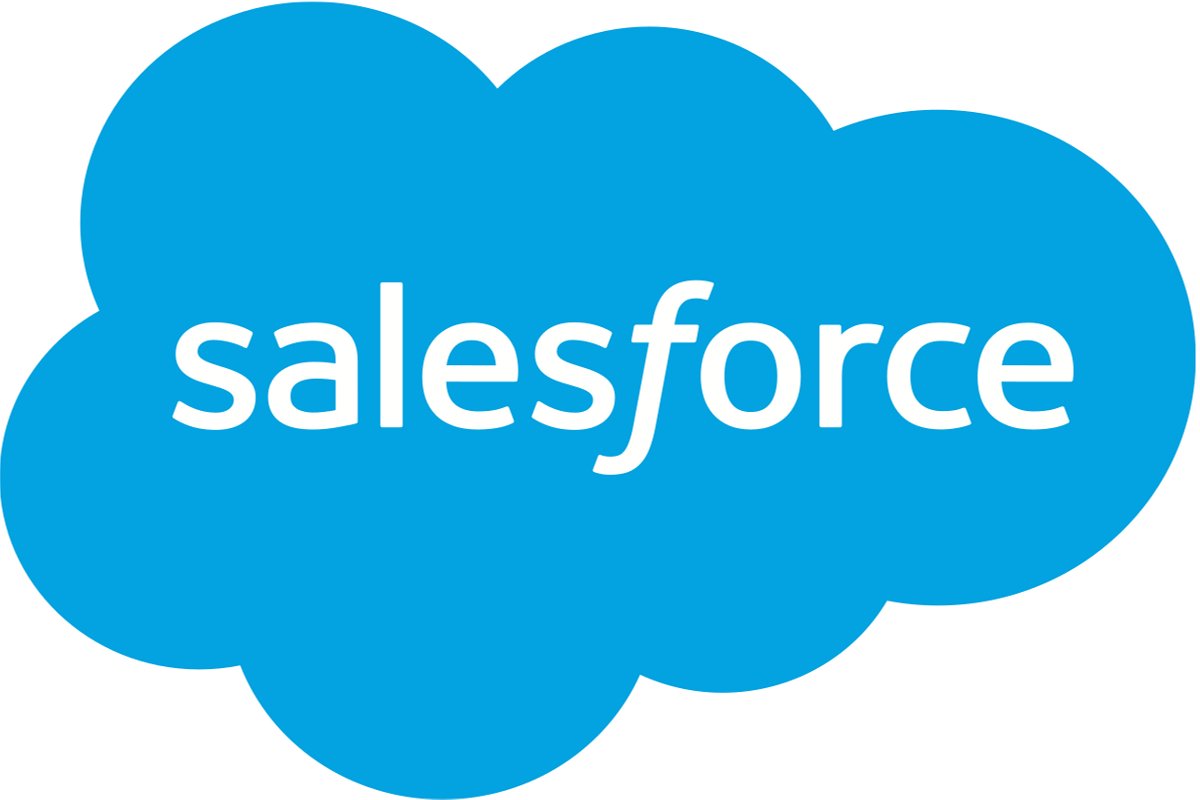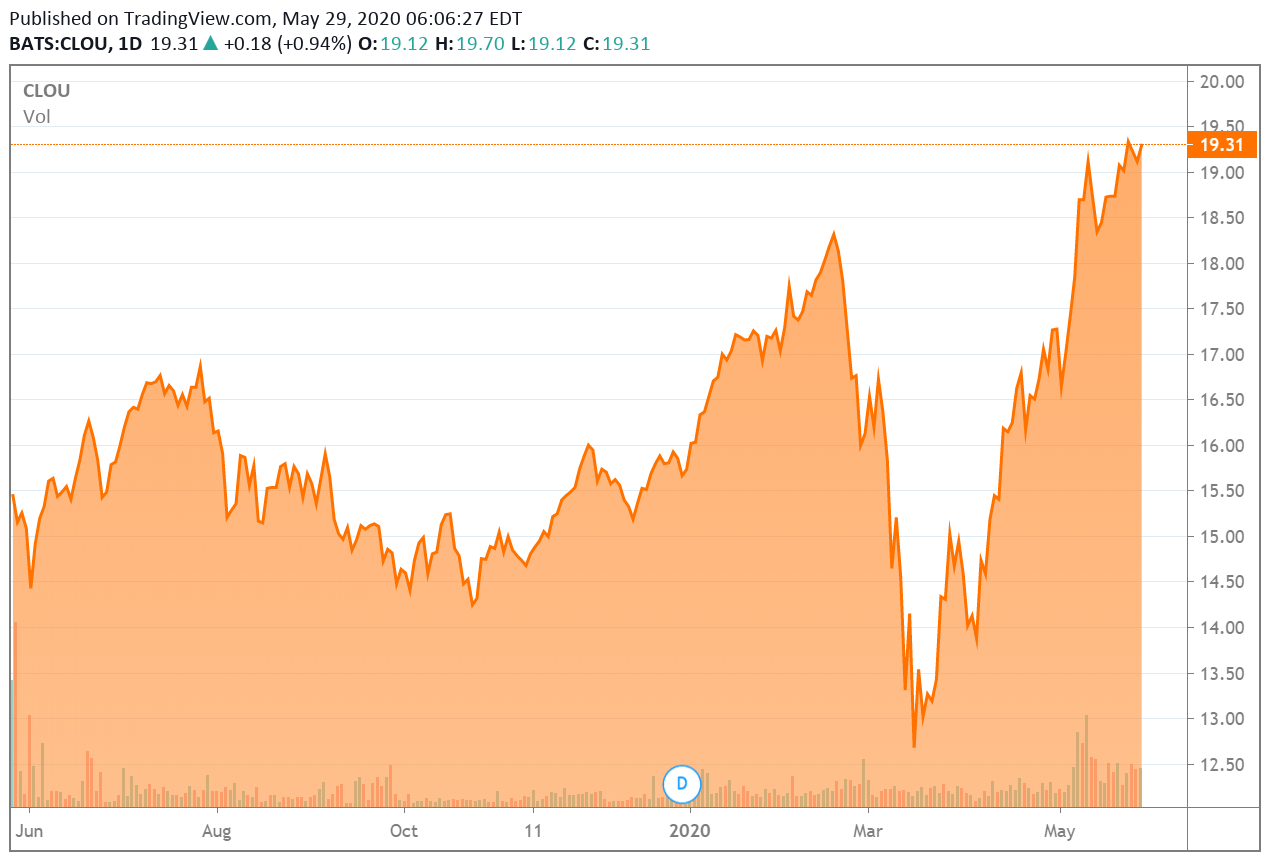
Date: 2025-10-14 Page is: DBtxt003.php txt00018925
Investment Trends
Salesforce.com: The Canary In The Coal Mine
Salesforce.com's downward guidance can have implications for the entire sector. ... The guidance itself is worse than it seems.
Peter Burgess
- Salesforce.com's downward guidance can have implications for the entire sector.
- The guidance itself is worse than it seems.
- This is a sector priced for perfection, and lowered guidance is hardly perfection, especially when it leads to prosaic growth rates.

It’s fair to ask whether Salesforce.com (CRM) might be the proverbial canary in the coal mine. I’m saying this because of yesterday’s earnings report and what it implies.
Salesforce.com, at a $165 billion market cap, is one of the largest “pure cloud players” out there. During the coronavirus crisis, these players as a group have distinguished themselves by having their stocks recover amazingly fast.
For instance, this is how the Global X Cloud Computing ETF (CLOU), a proxy for this group of stocks, did during the coronavirus epidemic:

Priced For Perfection Like Many Others
Like other stocks in this sector, CRM is priced for perfection. At that $165 billion market cap, it carries a 8.25x FY2021 Price/Sales, still far from the crazier stocks in the group.
It also carries a ~62x FY2021 P/E, but this is based on highly adjusted non-GAAP earnings. If we remove just the stock-based compensation adjustment from these non-GAAP earnings (because keeping intangible amortization is fair), then we’d be looking at a ~312x FY2021 P/E.
Again, these outrageous valuation metrics are typically even worse for most of the other players in the sector.
The thing is, the extreme recovery seen in these players in the context of the coronavirus epidemic was based on them supposedly being immune to the epidemic’s economic effects. Yesterday, by guiding down on revenue growth (and also EPS), Salesforce.com might have put that thesis to sleep – not just for itself but also for many other cloud players.
The Lowered Guidance Is Much More Significant Than It Looks
What Salesforce.com did, regarding revenue guidance, was to take its revenue guidance to ~$20 billion for FY2021. This compares to the market’s $20.77 billion expectation. FY2021 revenue growth expectations thus become +17% instead of +21.5%.
Some might think “well, that’s not too bad!”. But consider the following.
- First, FY2021 started with revenue guidance at $21.05 billion, so there’s already a pattern of lowering expectations here.
- Second, Salesforce.com actually beat Q1 FY2021 revenue consensus by $20 million. Then it guided Q2 FY2021 $150 million below expectations. And the FY2021 revenue guidance still includes $50 million in additional revenues from an acquisition. Put it all together, and this implies that H2 FY2021 will actually see the revenue growth rate fall all the way down to +9.3%! Lots of ordinary companies grow that much and don’t carry multiples like Salesforce.com does. And their multiples are on actual non-massively-adjusted profits.
- Third, it gets worse. A lot of Salesforce.com’s revenues are simply the recognition of contracts that have already been signed and (mostly) paid for. As of Q1 FY2021 end, Salesforce.com had “Current Remaining Performance Obligations” of $14.5 billion (these are realized over the next 12 months). Now, over the next 9 months, Salesforce is guiding for $15.14 billion in revenues. You can see that the overwhelming part of these revenues are from contracts already booked. The part (a quarter or so) that isn't already booked business is thus where nearly all the guidance impact must come from. That guidance impact is thus much larger than it looks.
What Salesforce.com implies is that cloud companies don’t exist in a vacuum. Mostly, these companies sell their services to “real economy” companies (even if there’s still some other cloud company in the middle before it reaches the real economy).
If the real economy has taken a severe hit because of the coronavirus lockdowns, ultimately these companies also suffer it in their businesses. Yet, they trade as if the fields are now even greener than before the coronavirus impact. Sure, there’s a story about “accelerated digitalization”, but the truth is that the impact on physical businesses has been so tremendous that nearly everyone is selling into a smaller pie. This will include even those companies that temporarily benefited from the shutdowns.
Yet, even as this realization strikes, the outrageous valuation multiples are still in place. If this spreads, we will see not just a business slowdown and fundamental impact but also significant multiple contraction. The multiple contraction alone can easily cut many players (including Salesforce.com) in half or worse. Were that to happen, by and large most cloud companies still wouldn’t be cheap.
----------------------------------------------------------------
Idea Generator is my subscription service. It's based on a unique philosophy (predicting the predictable) and seeks opportunities wherever they might be found, by taking into account both valuation (deeply undervalued situations) and a favorable thesis.
Idea Generator has beaten the S&P 500 by around 29% since inception (in May 2015). There is a no-risk, free, 14-day trial available for those wanting to check out the service.
Disclosure: I/we have no positions in any stocks mentioned, but may initiate a short position in CRM over the next 72 hours. I wrote this article myself, and it expresses my own opinions. I am not receiving compensation for it (other than from Seeking Alpha). I have no business relationship with any company whose stock is mentioned in this article.
134,763 people have CRM in their portfolio and get alerts
Looking for a helping hand in the market? Members of Idea Generator get exclusive ideas and guidance to navigate any climate. Get started today »